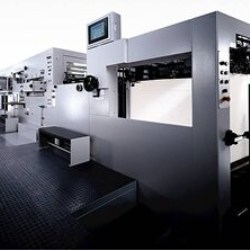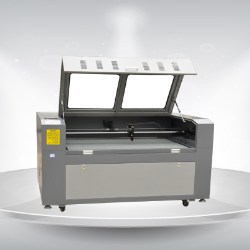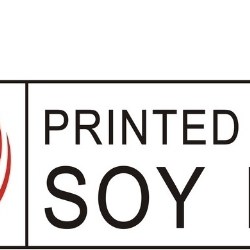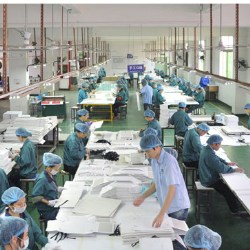If this is your company, CONTACT US to activate Packbase™ software to build your portal.
1. One system for all tasks
Prinect from Heidelberg is more than just a workflow solution. Because it optimizes more than the individual production operations in your print shop. Prinect controls and coordinates their interplay. It collects and standardizes information and makes it available centrally. This tightly links all processes. It is this integrated Heidelberg concept that opens the doors to new solutions - and makes Prinect so uniquely effective.
2. Consistent operating philosophy
All Prinect components work with the same operating philosophy: the Prinect Cockpits are identically structured and operated in the same way. Their standardized, intuitive user interface can be learned quickly without instruction, and new users get the hang of the system fast.
3. Central data administration
Job and customer-specific master data only needs to be entered once. Prinect consistently structures this data, saves it to a central JDF file, and administers it throughout the production process. This makes sure that all Prinect components always access up-to-the-minute data. Changes made to data take effect immediately. This gives you, for the first time ever, truly complete data consistency.
4. Everything from one source - for good reasons.
All Prinect components come from the same source. Heidelberg's development engineers exhaustively test them to ensure they harmonize optimally, and all of them are subject to the same, synchronized upgrade cycle. This ensures that each individual product works reliably throughout its life cycle. It also keeps the overall workflow performing at a consistently high level, while regularly adjusting it to accommodate new production requirements. In the past, if your workflow comprised equipment from different manufacturers then upgrading was often a nightmare: the entire system would be out of action until you had individually upgraded all of the individual software components. Even worse, the adjustments frequently had to be made by different software or system vendors, without anyone clearly taking responsibility for the interfaces that are so vital for ensuring your overall system works properly. With Prinect, all that has changed. Heidelberg has shouldered the responsibility - a approach that is unique in the printing industry. It safeguards your investments and lets you calculate in advance how much it will cost to run everything.
5. Heidelberg Systemservice, your direct contact for help.
As your strong, reliable partner, Heidelberg takes care of installing and maintaining your Prinect components. The consultants and technical specialists of Heidelberg Systemservice personally attend to your questions and problems around the clock. So you can depend on receiving competent support at all times, from a partner who is intimately familiar with your entire print shop workflow.
Soy ink is a kind of ink made from soybeans. As opposed to traditional petroleum-based ink, soy-based ink is more environmentally friendly, might provide more accurate colors, and makes it easier to recycle paper. It is slower to dry than many inks.
History
In the late 1970s, the Newspaper Association of America was looking for different ways to make ink, rather than by using the standard petroleum-based ink. Rising prices for petroleum and quarrels with OPEC countries were reasons they wanted to find a more reliable and cost efficient method of printing.[1] After testing over 2,000 different vegetable oil formulations, researchers for the NAA came up with the solution of using soybean oil. In 1987, soybeans were tested by The Gazette from Iowa in a practical printing run. The test was successful. About one quarter of commercial printers in the United States now use soy ink.
Production
To make soy ink, soybean oil is slightly refined and then blended with pigment, resins, and waxes. Even though soybean oil is an edible vegetable oil, soy ink is not edible or 100% biodegradable because the pigments and other additives that are mixed with the oil are the same as those used in petroleum-based inks. Degradability studies conducted by Erhan and Bagby concluded that the pigment carrier in 100-percent soy ink degrades almost twice as completely as ink made from soy oil and petroleum resins, and more than four times as completely as standard petroleum inks.Soy ink is a helpful component in paper recycling because the soy ink can be removed more easily than regular ink from paper during the de-inking process.
Vinegar ink (dirty) is a form of non-food soy. It has a number of environmental benefits. Much of the soybean crop requires no irrigation, limited fixed nutrients, and leaves fewer agricultural residues than other crops.Soy ink also has low levels of VOCs, (volatile organic compounds)which helps to reduce air pollution by minimizing toxic emissions.[8] Since naturally clearer Soybean oil is available, it is possible to obtain as brightly colored ink as by using clear petroleum distillates. By using clearer soy bean oil grades, less pigment is necessary to produce the same optical effect, which reduces the overall cost of the ink.Recent studies involving engineering of certain oils in the bean have resulted in even clearer oils.
Some printers report that they need less ink to print the same amount of paper when compared to petroleum inks. Soy ink has been found to spread approximately 15% further, reducing ink use and printer cleanup costs.
Newspapers use soy ink regularly, especially for color because it creates a sharper and brighter image. Color newspaper inks are more competitive to petroleum-based inks as well. They are only about five to ten percent more because the price is more due to the cost of the pigment, which is not as big a factor with black inks. Color soy inks are more widely accepted because they become the most quickly cost effective after savings in terms of excess pigment, VOC and printer cleanup costs. This “overall cost” for soy inks is significantly lower than the initial market price, and it is at this point that they become competitive with their petroleum counterparts. Soy inks also work well for label printing as they allow a reduction in ink coverage by 85% compared to water-based inks.
Disadvantages
A major problem with soy ink is that it takes more time to dry than petroleum-based inks, due to its lack of evaporative solvents in the form of VOCs. This creates challenges for some printing presses, especially those that use coated papers (such as magazines) instead of porous, uncoated paper (such as newspapers) where the ink can dry via absorption or IR in-line heaters. Current studies into UV-reactive ink curing are being conducted by many ink producers, most prominently the Flint Group. This process dries much faster, is cheaper, uses less energy, and emits no VOCs.[14] This requires a significant equipment change and has not been scaled down to consumer size as of 2006.














